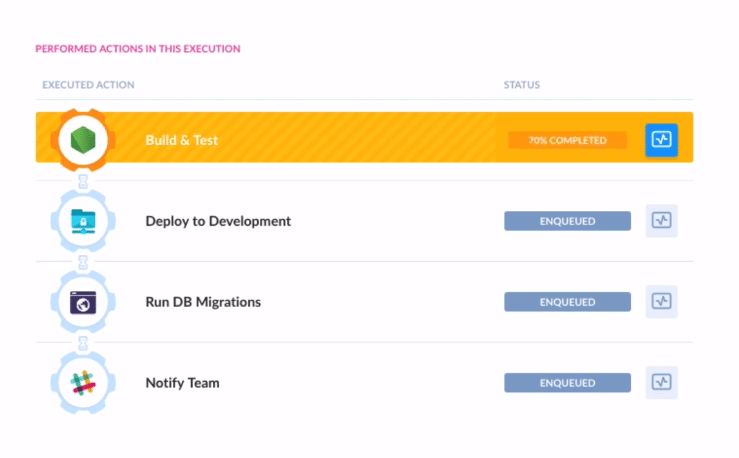DevOps is a powerful buzzword in the IT sphere in recent years, and it has become a gold standard for countless companies seeking faster, more cost-effective software development life cycles. However, just as many companies are struggling to gather the loose ends, define the business flows, and promote the collaboration and culture required to make DevOps work smoothly.
If you’re not careful about implementing it, DevOps won’t do what you want, and may even fall flat out of the gate. Instead, take the time to think about how you can ensure that your DevOps strategy is sustainable. Discover some effective ways to help ensure that when you roll out your new workflows, your teams take to it with enthusiasm.
IMAGE: PEXELS
Define And Justify DevOps For Your Business
For web developers, DevOps is a template that informs their every day’s tasks and must be clearly demarcated. Businesses that don’t incorporate the DevOps paradigm into their IT processes must start by getting a visual on the various components of their software development life cycle and observe as the IT team pushes tasks through. Identifying bottlenecks isn’t difficult at surface level and let you know where automation or minor changes could reduce employee inputs without sacrificing quality.
You might see that the various environments (production, testing, development, staging) are configured differently, creating inconsistencies that kill agility almost instantly. Manual intervention by an IT employee is another common bottleneck and an immediate candidate for automation. Anything done by hand (adding a new feature to the bug tracking platform after it’s requested in the ITSM, for instance) is a waste of time. By seeing what’s causing blockages, you know what you ultimately need, and can, therefore, choose metrics that help you measure how well your solutions are working.
IMAGE: PEXELS
Deploy DevOps Strategies That Encourage Collaboration
The SDLC is a cyclical series of steps that encompasses the entire IT value chain, and end-to-end coverage is necessary to keep everyone on the same page and problems contained. One of the oldest bottlenecks in the IT book is departmental; each team has a different incentive to boost speed to market, encourage reliability, maximize availability, or ensure strict compliance. Customer satisfaction is the only goal that should matter to any of these teams and aligning incentives is, therefore, a key part of strong DevOps.
Though it will always be the case that some IT teams cherish metrics that others do not, implementing the right DevOps tools will ensure these metrics are linked. Platforms such as Buddy can help you organize your DevOps into a relay-styled operation into a relay-styled operation. No team should hand off a task before it’s been considered and optimized for the next link on the chain, and Buddy employs automation tools to help businesses reduce the number of physical steps that comprise any company’s dev life-cycle.
IMAGE: BUDDY
Progressive Rollouts Are Key
DevOps is certainly exciting for IT managers, but savvy ones understand that the deployment of automation and other tools comes second. Not only do employees tend to respond in a volatile manner to sudden changes in the way they work (even if it’s for the better), the newness of a growing DevOps strategy is a bottleneck of its own accord. Because DevOps is an organizational methodology, changes tend to create waves that disrupt nearly everyone, so even if you know which tools and fixes need to happen it’s important to do it slowly.
Automation is a big part of proper DevOps but again, care must be taken to avoid over-automation. There needs to be a DevOps team or authority, which decides when and how tools will change to inspire agility. If changes are made in a flippant way, say by an IT manager who believes himself to be a DevOps influencer and seeks to automate as much of his job as possible, it will have serious problems. What if these processes themselves are inefficient and need to be changed? Then what he’s done is essentially to encase faulty infrastructure in cement right before it’s torn down.
If an established team or weekly meeting can identify the most “high value” tools in terms of resources and ROI, then they can banish any changes on these flows until they’ve been measured properly.
Have Advocates Among Your Team
There’s no DevOps without the developers, and you’ll need team members that are cooperative and willing to go beyond the scope of their daily tasks and also provide feedback about how they might be improved. It’s taxing to think about things in two perspectives at once (How do I get the task done? How do I make it faster?) but you must motivate this type of thinking somehow. Unfortunately, all organizations have their inside saboteurs, who are the opposite of advocates when new tools or processes disrupt the comforts of their daily scope of work.
Management is free to make changes as they like, but it’s employees who are dealing with it. This is another reason why employee advocates are key, as others are more likely to trust their coworker than their boss (or at least question their motives). Identify those in your organization’s IT group who are DevOps champions and give them added responsibility and recognition. It will show your team that DevOps is supposed to be ingrained, not some temporary “performance improvement plan” meant to squeeze every drop of productivity from them.
In the end, turning DevOps into a reality for your company is a matter of pushing contextual thinking into every business process. With IT omniscience thanks to the right tools, cutting away the fat in your software development life cycle may be uncomfortable in the short-term but it encourages employees to constantly look for ways to be lean, and to do so without being afraid of letting loose ends unravel or automating their own positions away. Companies must do their due diligence to ensure they’re ready to embrace DevOps, or that they even need it, before spending money and effort to re-focus their IT flows.
If you are interested in even more business-related articles and information from us here at Bit Rebels, then we have a lot to choose from.



COMMENTS